A vivid yellow-orange throat and yellow chin combine with equally vivid wing feathers to make for one of the most brightly colored, plump members of the babbler family there is.
Meet the Red-billed leiothrix
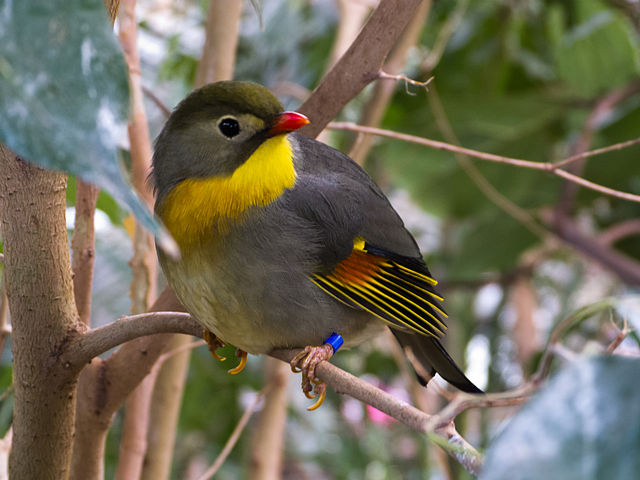
Photo Courtesy of Jonathan Jordan – Pekin Robin Uploaded by snowmanradio – CC BY 2.0
The red-billed leiothrix (Leiothrix lutea) is a member of the Leiothrichidae family. Six inches in length, adult males have red bills and a dull yellow ring around their eyes. Generally olive green in color they also have a yellow throat with orange shading to the breast. The edges of his wing feathers are brightly colored with yellow, orange, red, and black along with a forked olive-brown tail that has a black tip. Cheeks are a bluish-gray color as are the sides of their neck.
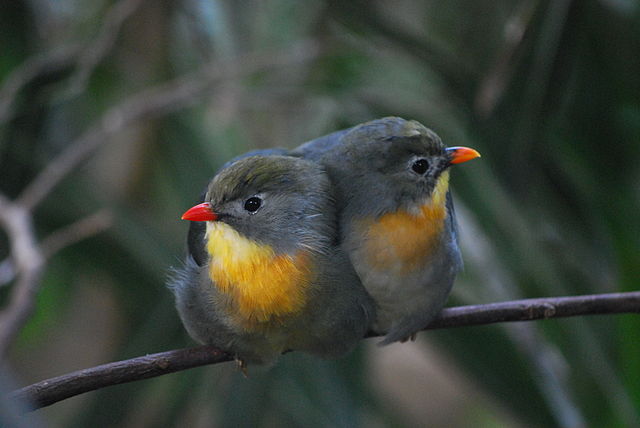
Photo Courtesy of Gwyn Richards – Uploaded by Snowmanradio / CC BY 2.0
Females are a duller color when compared to males and lack the red patch on their wings.
Juveniles look more like the female, though they do have black bills instead of red.
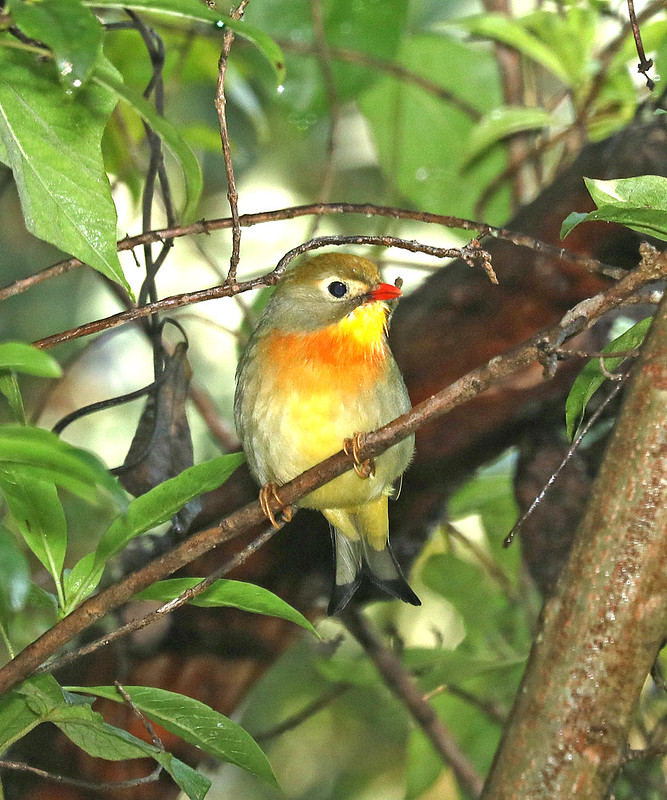
Photo Courtesy of ALAN SCHMIERER / Public domain
The Red-billed leiothrix is usually found throughout India, Bhutan, Nepal, Burma, and some parts of Tibet.
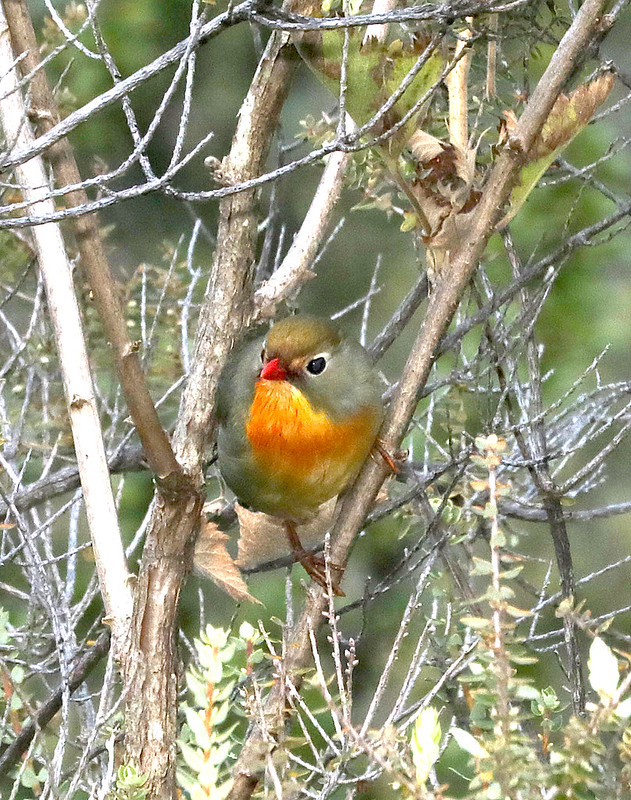
Photo Courtesy of Imran Shah / CC BY 2.0
This species lives in the hill forests of the countries where it resides, preferring pine and bushes. It doesn’t fly unless it is in the open, living in elevations from sea level to around 7,500 feet.
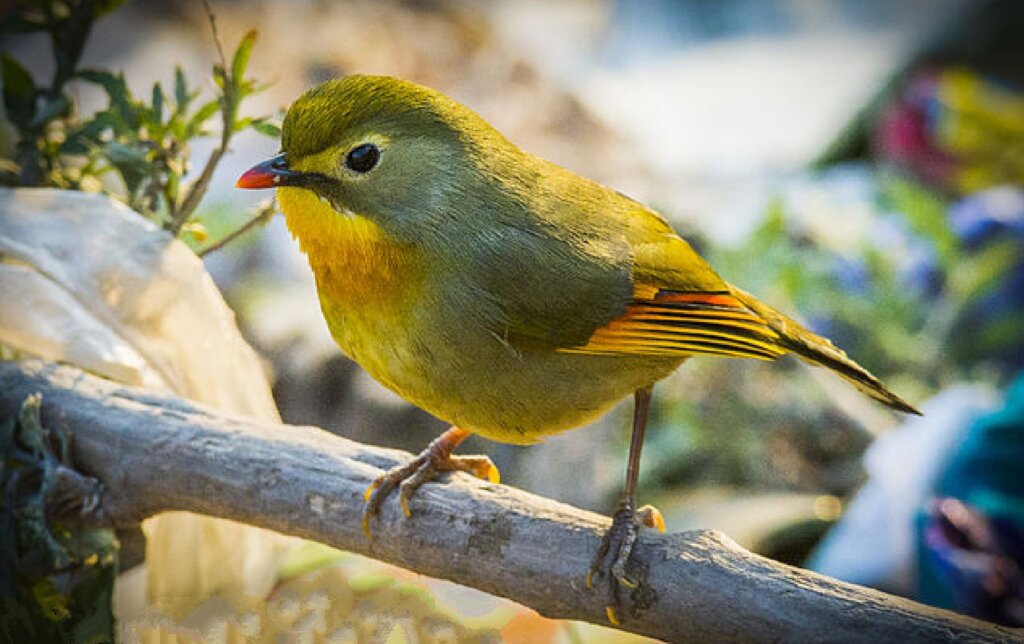
Photo Courtesy of Drmanubmengi / CC BY-SA 4.0
The Red-billed leiothrix is usually seen feeding in lower strata vegetation and dead wood fossicking for food. It eats strawberries, ripened papaya, and guava.
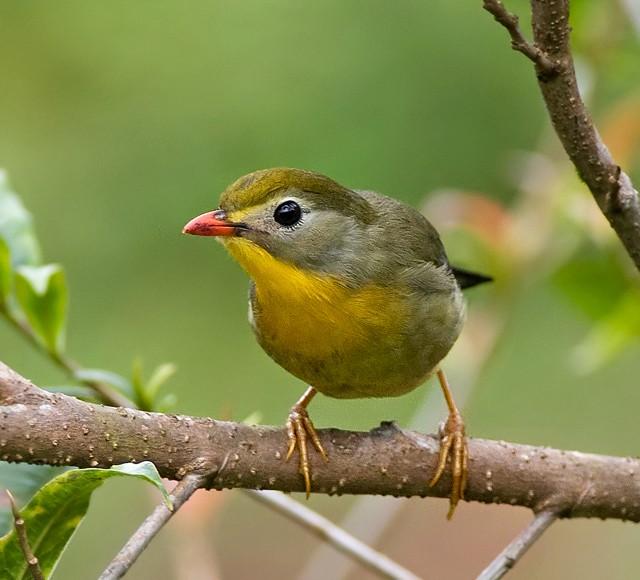
Photo Courtesy of shrikant rao / CC BY 2.0
The breeding season is from April to September where these birds break off into pairs and become and become quite territorial. An open nest is built, composed mainly of leaves, moss, and lichen in dense vegetation. The female lays two to four eggs of a pale blue color, with red spots on the larger end. The chicks, when they hatch, are bright red with a rich orange gape.
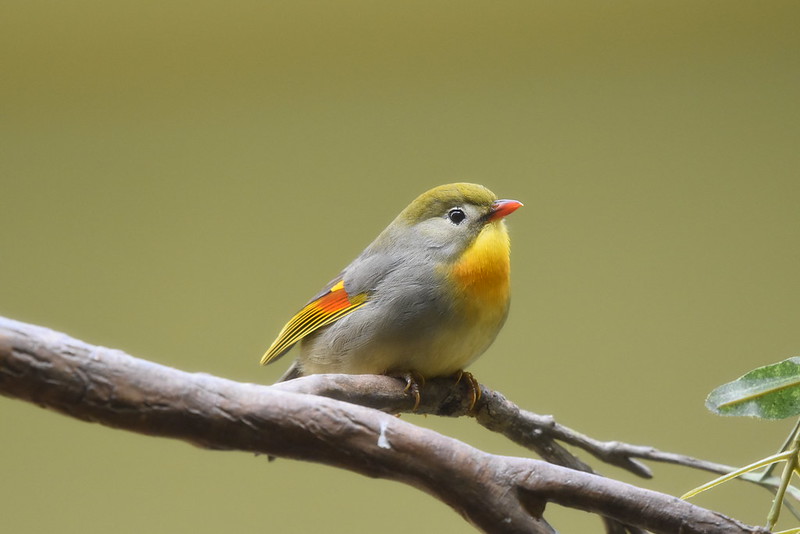
Photo Courtesy of Laura Wolf / CC BY 2.0
This species is not considered to be under any immediate threat and is actually considered to be a threat to other bird species in areas where it has been introduced. Such as in Hawaii where several endemic species have become extinct. It is thought that L. lutea may have contributed to their decline.
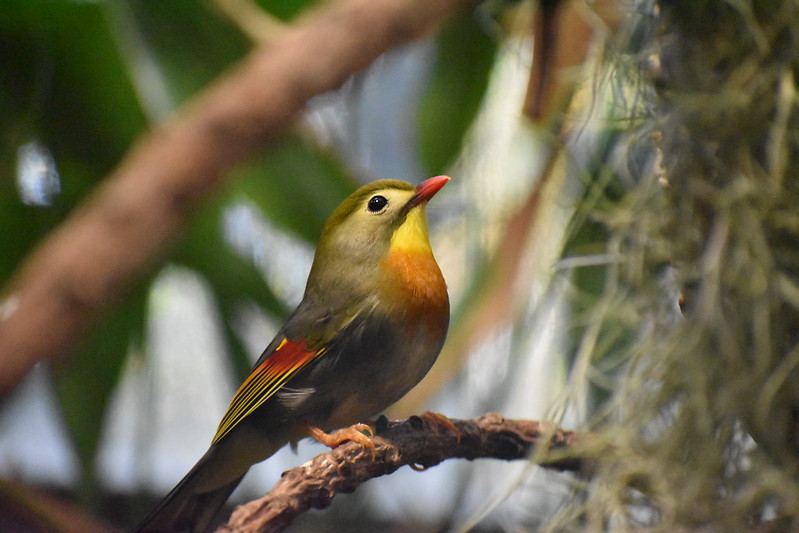
Photo Courtesy of Laura Wolf / CC BY 2.0


